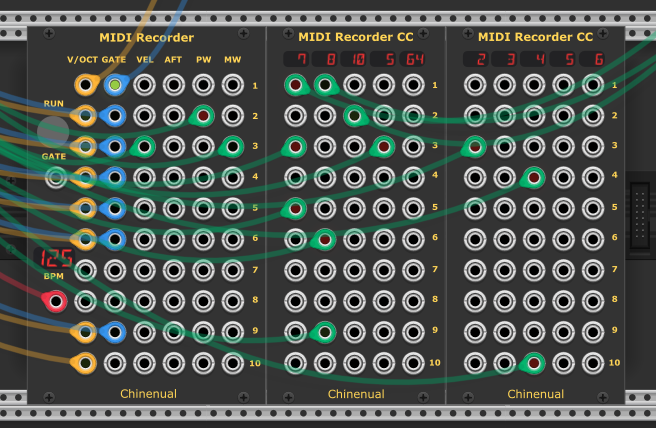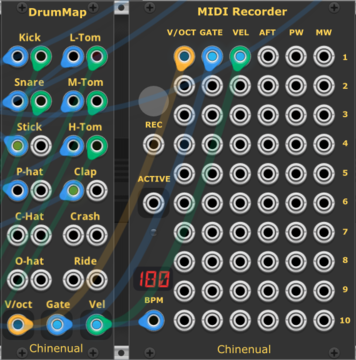In a past life, I developed expert systems, compilers and high
performance runtimes, back-office financial software, smart grid
infrastructure and a variety of other enterprise scale backend
systems.
These days, I work mostly on music-oriented projects. Here are some
of the recent ones.

Synergize is a full-featured
librarian and patch editor for the vintage DK Synergy synthesizer
supporting both the original hardware and the new Synergia virtual
instrument. It runs on Windows, Mac or Linux and
offers a modern graphical alternative to the original CP/M based SYNHCS software.
It adds a number of related utilities:
- a TouchOSC based iPad control surface offering a GDS-like editing experience
- a Yamaha DX7 to Synergy patch conversion utility
- a Synergy SYN Sequencer to MIDI converter
go-scala - a Go translation of the Surge project’s C++ based microtuning / Scala
file library

An updated hardware adapter for Iasos’s “Golden Harp”.
Iasos is, by most accounts, one of the originators of New Age music.
A mutual friend got us together so that I could help give this unique
instrument a new lease on life.
The original instrument relied on an old Commodore 64. This project
involved deep reverse engineering Iasos’s harp controller
hardware. It is a small Arduino-based hardware device that intercepts
events encoded over a high speed serial
connection and converts to standard MIDI. The new adapter improves on
the original by supporting a configurable number of scale presets that Iasos can now
easily change in real time.

A VST/AU MIDI effect that provides random arpeggiation without ever
repeating a note. The musician can control the rate of the
arpeggiation (which can be very slow to simulate things like wind
chimes, or very fast – about 10ms, which Iasos calls the “crushed glass” setting).
There are also controls for randomizing the note length and velocity
of the arpeggiated notes.

A VCV module and
expander that converts up to 10 tracks of polyphonic control
voltages to MIDI and produces a standard multitrack MIDI file which can then be
imported to any DAW.

A VST/AU audio effect with two bandpass filters that track MIDI from
two MIDI channels and filter side-chained audio. This allows the
musician to “strum” the
Golden Harp to control the bandpass
frequencies. The two filters are independent, so both strips on the
harp can be strummed independently.


A new module, DrumMap, converts input percussion/drum gate inputs to pitch outputs corresponding to user-selectable General MIDI conventions. Use it to produce a polyphonic “drum track” with MIDIRecorder, or connect it directly to an external drum machine or DAW with VCV core’s CV-MIDI.
Click on the input pair label to change the MIDI note to be associated with that gate.
Produces three polyphonic outputs V/Oct, Gate and Vel suitable for directly importing into the MIDIRecorder or sent out through CV-MIDI.

The Tintinnabulator produces a harmonized pitch from an input chord and melody using Arvo
Pärt-style tintinnabulation where a harmony note is selected from a
reference chord. Pärt’s music tends to use simple triads for his
tintinnabulation but the module allows you to specify any set of notes
as the reference.
The module supports several variants of the harmonization - select
first available pitch or next one, in both upwards or downwards
direction. Also supports bidirectional tintinnabulation, where every
other note switches between upward or downwards selection. An Octave
offset can be used to offset the harmony up or down from the reference
melody line.

NoteMeter is a polyphonic metering module that displays note names
from V/Oct inputs. If the input voltage does not align exactly with a
note voltage it indicates the deviance from the closest note as
“cents”.

Inv produces a chromatically inverted V/oct
pitch relative to a specified “pivot” pitch.
Can be combined with a quantizer to approximate diatonic inversion.



Splits a polyphonic cable and optionally sorts the channels, with possibility to share sort criteria with another SplitSort or MergeSort. Linked sorting is inspired by Aria Salvatrice’s Splort module.
Merges a set of monophonic signals into a polyphonic cable and optionally sorts the channels, with possibility to share sort criteria with another SplitSort or MergeSort. Linked sorting is inspired by Aria Salvatrice’s Smerge module.
Sort polyphonic signals, optionally reusing the same sort order as other inputs. Sorted output remain in sync with one another at the sample level.
A reimagining of Iasos’s “Golden Harp”. Maps a continuous pitch CV input signal to a scale and generates gated notes as you “strum”.

Harp does not depend on any particular control surface and can be configured to work with a variety of CV input ranges. You can use it with anything that can create a continuous voltage as the musician “strums” (could be a slider on a MIDI control surface, a ribbon controller, heck, even an LFO) I’ve created a simple control surface for the iPad using TouchOSC. The control surface sends both MIDI and OSC messages as the faders move; use whichever works best for you.

 Audius
Audius 












